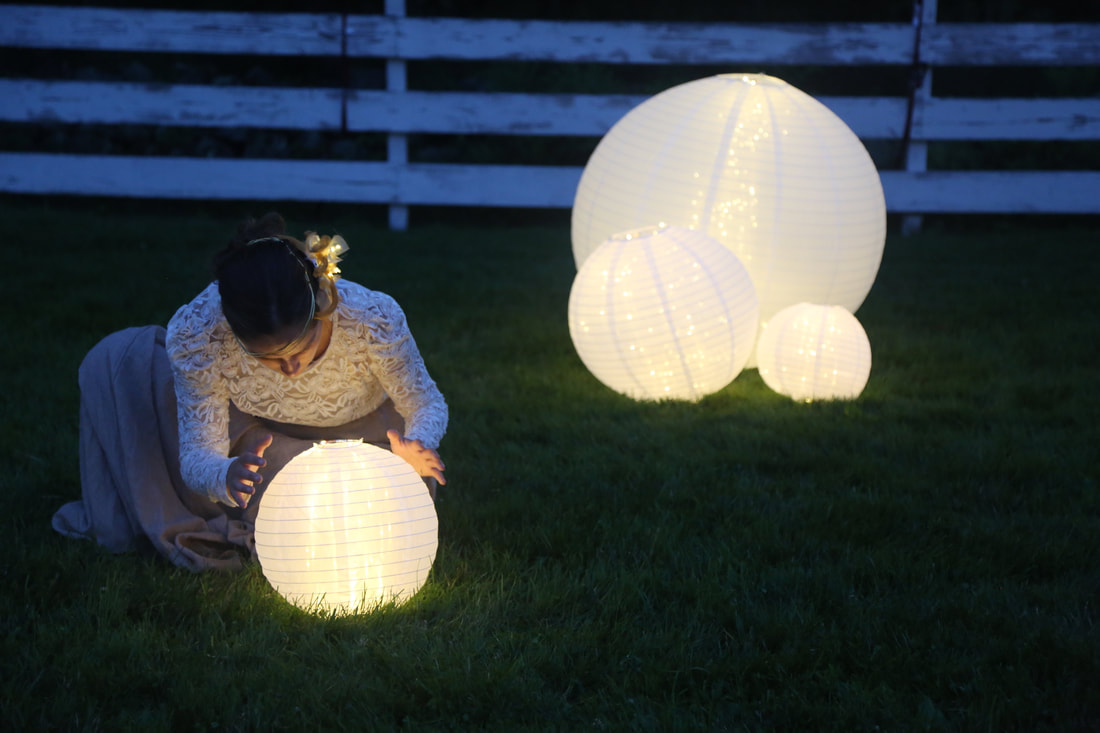|
Ballaro Dance's "Embedded Memories" replaces fear and shame with pride and strength. (Photo by Becky Osborne) Wounds not only leave physical scars, they leave emotional ones too.
But healing those scars, taking them to a place where fear and shame are replaced with pride and strength is where choreographer Marisa Ballaro is trying to inspire all to go. Her message of hope and healing is strong in Ballaro Dance’s “Embedded Memories.” As seen on Saturday night at Universal Preservation Hall, the site-specific work is inspired by Kintsugi, the Japanese art of pottery repair that emphasizes the breaks by filling them with luminous gold. In “Embedded Memories,” those cracks or scars were represented by lights – strung inside costumes and clustered in glowing balls along the floor and ceiling. Ultimately, these lights, Ballaro seems to suggest, guides one from despair to confidence. The work was offered up with a trio of dancers whom the audience encircled, a reference to connectedness and wholeness. But as the three dancers first appear, they look to run or shed something. They move in place, unable to flee. They wipe and wipe and wipe themselves, only to find that the scar is still there, adhering to their bodies. Music by a number softly plays in the background while Ballaro reads snippets of stories collected in communities where the company has performed. She speaks of the hurt of injuries, the pain of recovery and the relief and joy in ultimately overcoming. There are symbolic gestures as when one dancer took the light from another’s head it placed it near her heart. Yet another dancer stripped off a layer of clothing, thus stripping away some of the pain. But no matter what the dancers did – eventually running freely through the space and embracing the glowing balls of white light — the scars remain. The work ended with the dancers in a prayerful scene, quietly breathing and seemingly accepting their damaged parts. After the program, Ballaro asked audience members to share their own experiences of trauma by writing an anonymous note and perhaps attaching a Polaroid photo (a camera was available) of the author. Those stories, left on a table in an adjoining room, could end up being told at Ballaro Dance’s next stop. The program was preceded by a work developed by 13 young dancers who spent a week choreographing their own piece with a similar theme. Led by Nacre Dance Group Artistic Director Beth Fecteau with Ballaro, their work gives one hope that dance, which bears its own scars of blatant disregard, is secure in the dedicated bodies of these budding artists.
0 Comments
Leave a Reply. |
Wendy
|

 RSS Feed
RSS Feed
